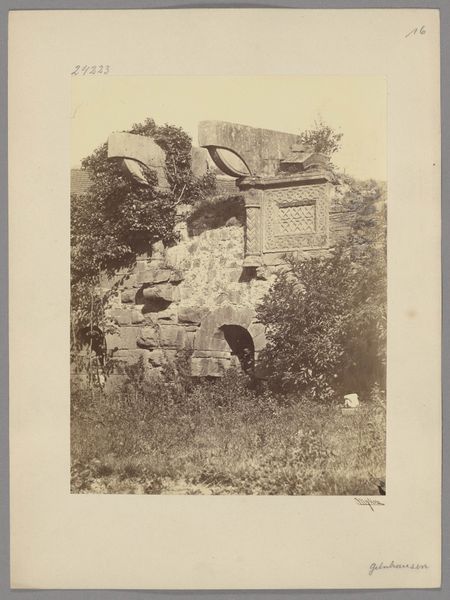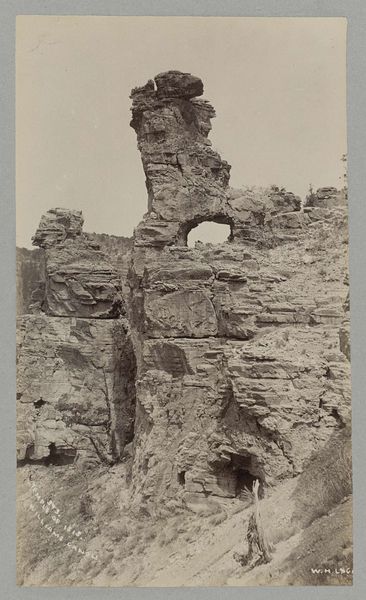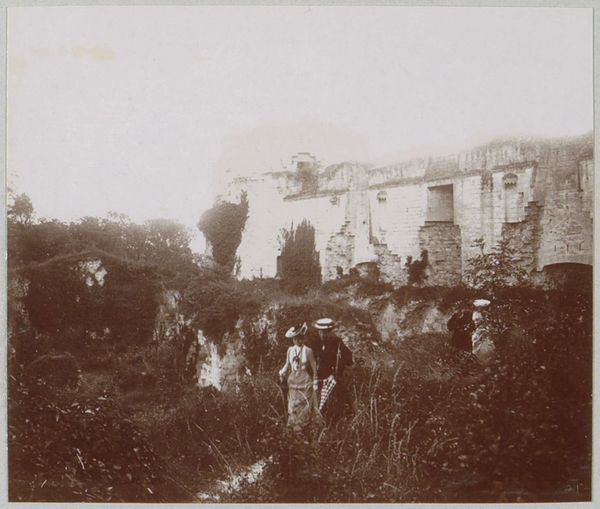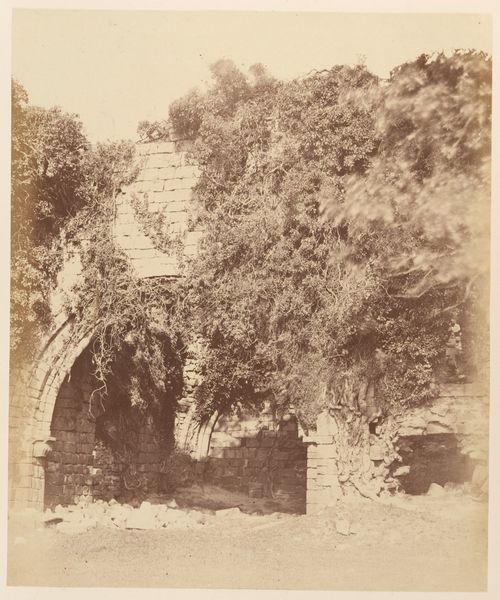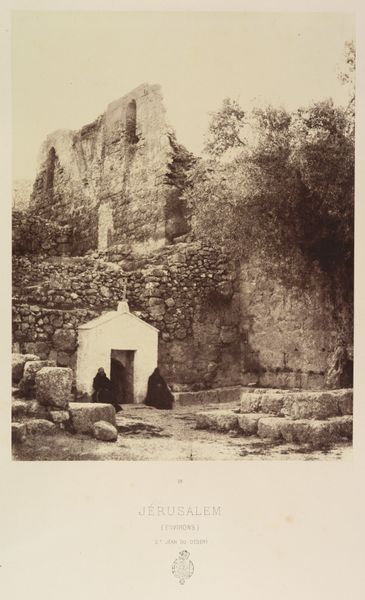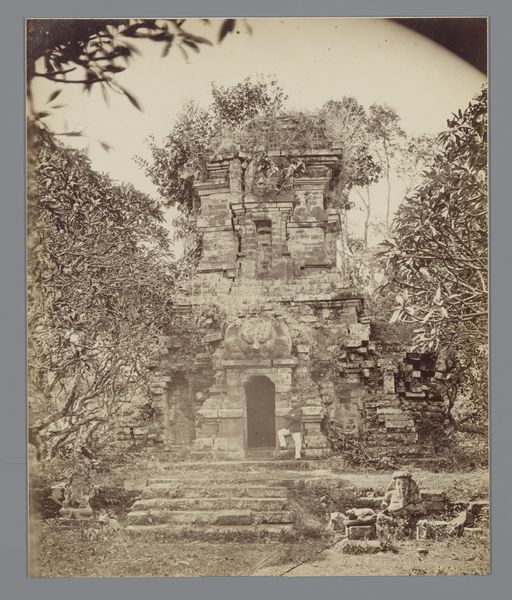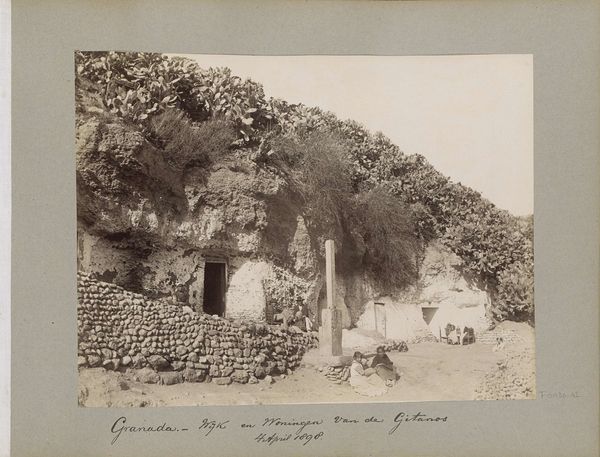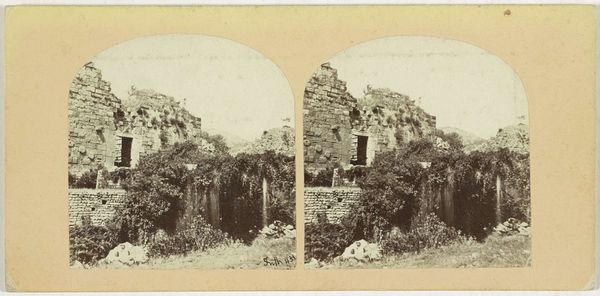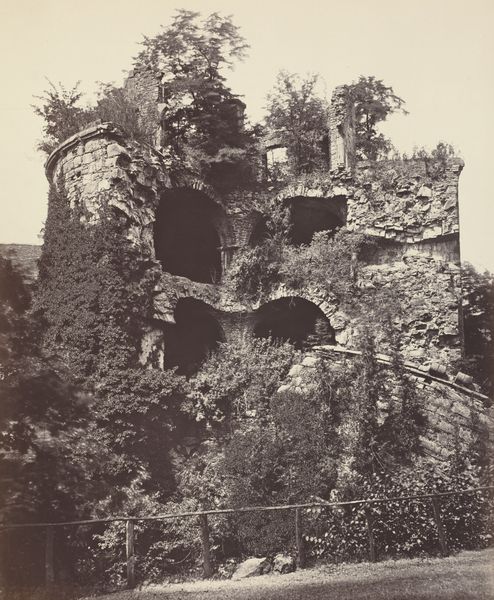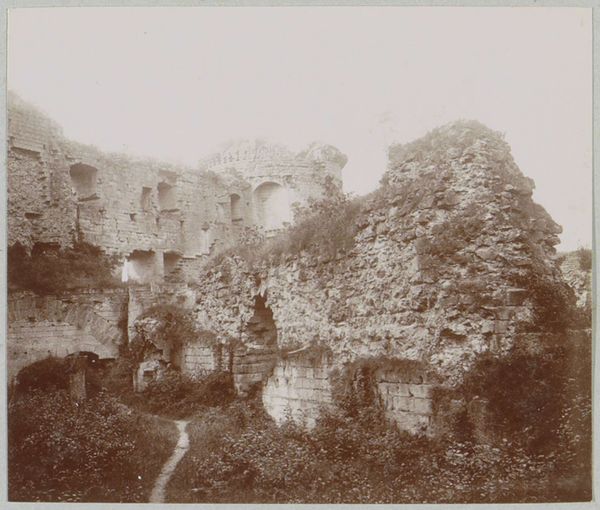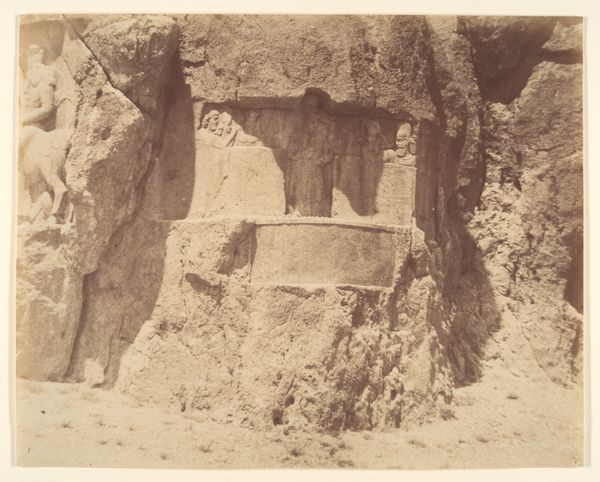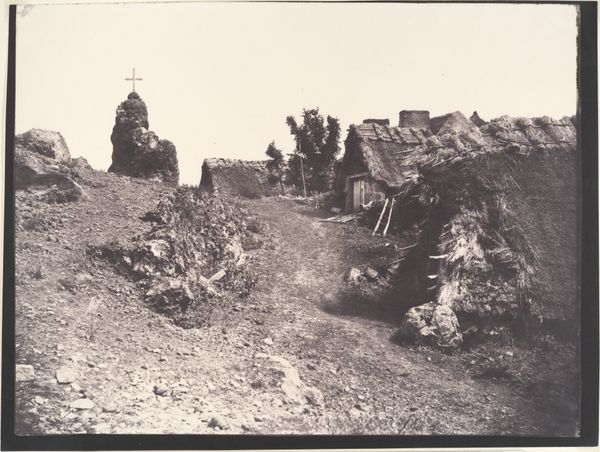
Candi Parakesit, general view of the ruined temple and the scattered sculputal and architectural reamins; the temple dissapeared in 1873. Dieng Plateau, Wonosbo district, Central Java province 8th- 9th century. Possibly 1864 - 1867
0:00
0:00
daguerreotype, photography, site-specific
#
landscape
#
daguerreotype
#
indigenism
#
photography
#
site-specific
#
history-painting
Dimensions: height 290 mm, width 240 mm
Copyright: Rijks Museum: Open Domain
Curator: Here we see Isidore Kinsbergen’s photograph of Candi Parakesit, likely taken between 1864 and 1867. It captures the ruined temple, swallowed by vegetation in Central Java. The temple itself sadly disappeared by 1873. Editor: It's undeniably melancholic. The crumbling stone, the aggressive overgrowth...the textures are heavy, like the weight of time and loss pressing down. There’s a palpable sense of entropy. Curator: Precisely. Consider this through the lens of colonial influence. Kinsbergen, a photographer of Dutch origin, documents what is essentially the “exotic” other for a Western audience, framing the decay of indigenous structures, a visual metaphor readily interpreted through a colonial gaze as stagnation. Editor: While that narrative resonates, look at the interplay of light and shadow. Kinsbergen has masterfully composed the scene to highlight the geometry inherent in the ruins, even in their dilapidated state. See how the vertical lines of the doorway offset the horizontal stratification of the brickwork. Curator: That reading diminishes the indigenous narrative. These are not mere abstract lines, but cultural signs, coded with meaning specific to the people who built and worshipped here. Their deterioration becomes symbolic of cultural disruption and the erasure of history under colonialism. Editor: I concede that context is essential, yet can’t help admire the photographic technique itself. The clarity Kinsbergen achieves with the daguerreotype process, the sharpness of the detail amidst all that ruin – there's an undeniable aesthetic intention there. Curator: Intention undeniably framed by his socio-political context. The photograph, as a historical document, isn't just about light and shadow. It’s about power, representation, and the complexities of cultural exchange, about witnessing the visual subjugation of another nation. Editor: Perhaps it’s both. Kinsbergen captured a specific moment, a ruin pregnant with layered significance and aesthetic complexity, inviting interpretation across varied lenses. It captures absence as much as presence, prompting consideration to a lost space, frozen in time. Curator: Yes, it's a somber memento, spurring contemplation regarding cultural appropriation and heritage through art, sparking inquiry that is ultimately political, and fundamentally human.
Comments
No comments
Be the first to comment and join the conversation on the ultimate creative platform.
